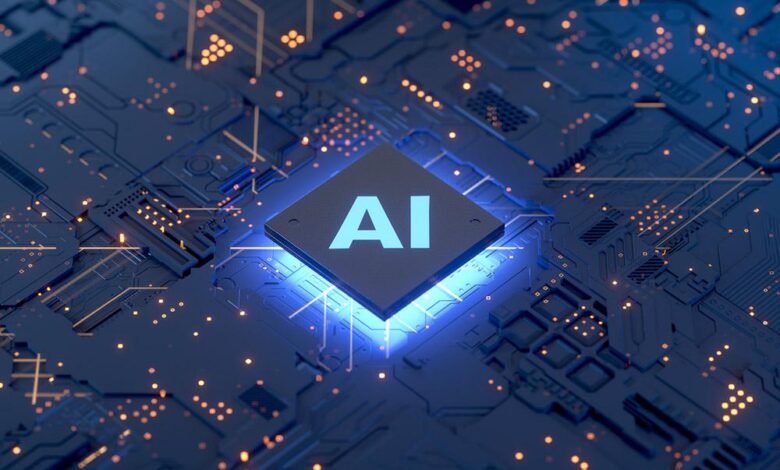
Introduction:
Artificial Intelligence (AI) has quickly become a cornerstone of technological innovation, shaping industries and enhancing our daily lives. One important aspect that often goes unnoticed, however, is the need for detecteur ia, or detecteur ia in French. These detectors serve as crucial tools for identifying AI-generated content, monitoring AI-driven processes, and ensuring the ethical use of AI in various fields. In this article, we will explore what AI detectors are, how they function, and why they are increasingly essential in a world that depends on artificial intelligence.
What is an detecteur ia?
An AI detector, or AI detection system, is a tool designed to identify AI-generated content, behaviors, or activities. This technology is essential for ensuring that the content produced by AI systems aligns with ethical, legal, and societal standards. AI detectors play a critical role in domains like education, content creation, cybersecurity, and even social media.
For example, with the rise of AI-generated text, such as essays or articles created by language models, educational institutions and businesses are keen to determine if a piece of content was created by a human or an AI. Detecteur ia help provides this verification, thereby maintaining authenticity and transparency.
How Do detecteur ia Work?
Detecteur ia rely on complex algorithms and data analysis to identify patterns specific to AI-generated content or behavior. Here are some common methods and techniques used in AI detection:
Pattern Recognition and Analysis
Since AI-generated text often follows certain predictable patterns, detectors can compare these patterns against known human writing styles to determine the likelihood of AI involvement. For instance, AI-generated text may have less variance in sentence structure, specific token distribution, or even unnatural coherence in large passages.
Natural Language Processing (NLP)
NLP is the backbone of most detecteur ia. It enables the system to “understand” the language and determine if it aligns with typical human usage.
Machine Learning Models
Many detecteur ia use machine learning models that have been trained to recognize AI-generated content. These models are built by training algorithms on large amounts of data that include both AI-generated and human-created text. With continued learning and updates, these models become increasingly accurate in detecting AI-based content.
Deep Learning and Neural Networks
Some advanced AI detectors use deep learning techniques, particularly neural networks, to analyze images, audio, or text. Neural networks are effective at identifying subtle cues in AI-generated outputs, such as artifacts in generated images or unusual tonal shifts in synthesized speech.
Statistical Analysis
AI detectors For instance, AI text may exhibit unnatural word frequency distributions, excessive repetition, or unusual vocabulary choices that don’t match the expected human pattern.
Applications of AI Detectors
Detector De IA application. Let’s explore a few key examples:
Education
In schools and universities, detectors help ensure academic integrity by verifying that assignments, essays, or projects are the result of a student’s efforts rather than AI tools. This helps educators uphold standards of originality and prevent plagiarism.
Content Creation and Media
As AI-generated content becomes more common, news agencies, bloggers, and publishers rely on AI detectors to distinguish human-created stories from AI-assisted ones. This ensures that audiences receive reliable, high-quality information and are made aware when AI plays a role in content production.
Cybersecurity and Fraud Detection
AI detectors are used to monitor online activity and identify AI-driven threats like phishing attacks, deepfakes, and other forms of malicious activity. Cybersecurity detecteur ia are particularly useful for identifying patterns that would be difficult for humans to spot, such as network anomalies or suspicious data transfer patterns.
Social Media and Online Platforms
To prevent the spread of misinformation and harmful content, social media platforms use AI detectors to monitor posts, comments, and videos. This detection process helps in identifying and labeling AI-generated content, enabling users to differentiate between genuine human content and potentially manipulative AI-generated material.
Healthcare
In healthcare, AI detectors monitor the use of AI algorithms in diagnosis and treatment. By analyzing outputs from AI-driven systems, these detectors ensure that the AI is operating within safe and ethical boundaries, providing doctors with valuable information while protecting patients’ rights and privacy.
Benefits of AI Detectors
- Enhances Transparency: AI detectors allow people to identify AI-generated content, enhancing trust between creators and consumers.
- Prevents Misuse: By identifying unethical AI use, detectors help organizations prevent malicious activities, such as impersonation through deepfakes or data manipulation.
- Supports Content Authenticity: For educational and creative industries, AI detectors help verify that content is genuinely original, maintaining quality and credibility.
- Promotes Accountability: With detecteur ia, organizations and developers are held accountable for the ethical use of AI, ensuring that these systems are employed responsibly.
Challenges in AI Detection
Despite their many benefits, AI detectors face several challenges:
- Constant AI Evolution: As AI models become more sophisticated, they can better mimic human behavior, making detection more difficult.
- False Positives/Negatives: Detecteur ia may sometimes mistakenly identify human content as AI-generated or fail to detect AI-generated content, impacting their reliability.
- Resource Intensive: Training and maintaining AI detection systems require significant computational resources, making it costly for organizations to implement.
- Privacy Concerns: In sectors like healthcare, AI detectors must be carefully managed to ensure patient privacy and comply with regulations, which can be a challenging balance to achieve.
The Future of AI Detection
The future of detecteur ia looks promising, as ongoing advancements in machine learning, deep learning, and natural language processing will enhance their accuracy and efficiency. With improved data, detection systems will continue to evolve, meeting the demands of a world increasingly shaped by AI. As we continue to innovate, the role of AI detectors will only grow, establishing a safe, ethical, and transparent environment for AI integration.
Conclusion
AI Detectors are essential tools in today’s digital world, playing a vital role in identifying, monitoring, and regulating the use of AI across various industries. From protecting academic integrity to ensuring content authenticity, Detecteur ia provides an important safeguard in a landscape where artificial intelligence is everywhere. As technology advances, so too will the capabilities of these detectors, empowering individuals, businesses, and institutions to navigate an AI-driven world with confidence and security.



